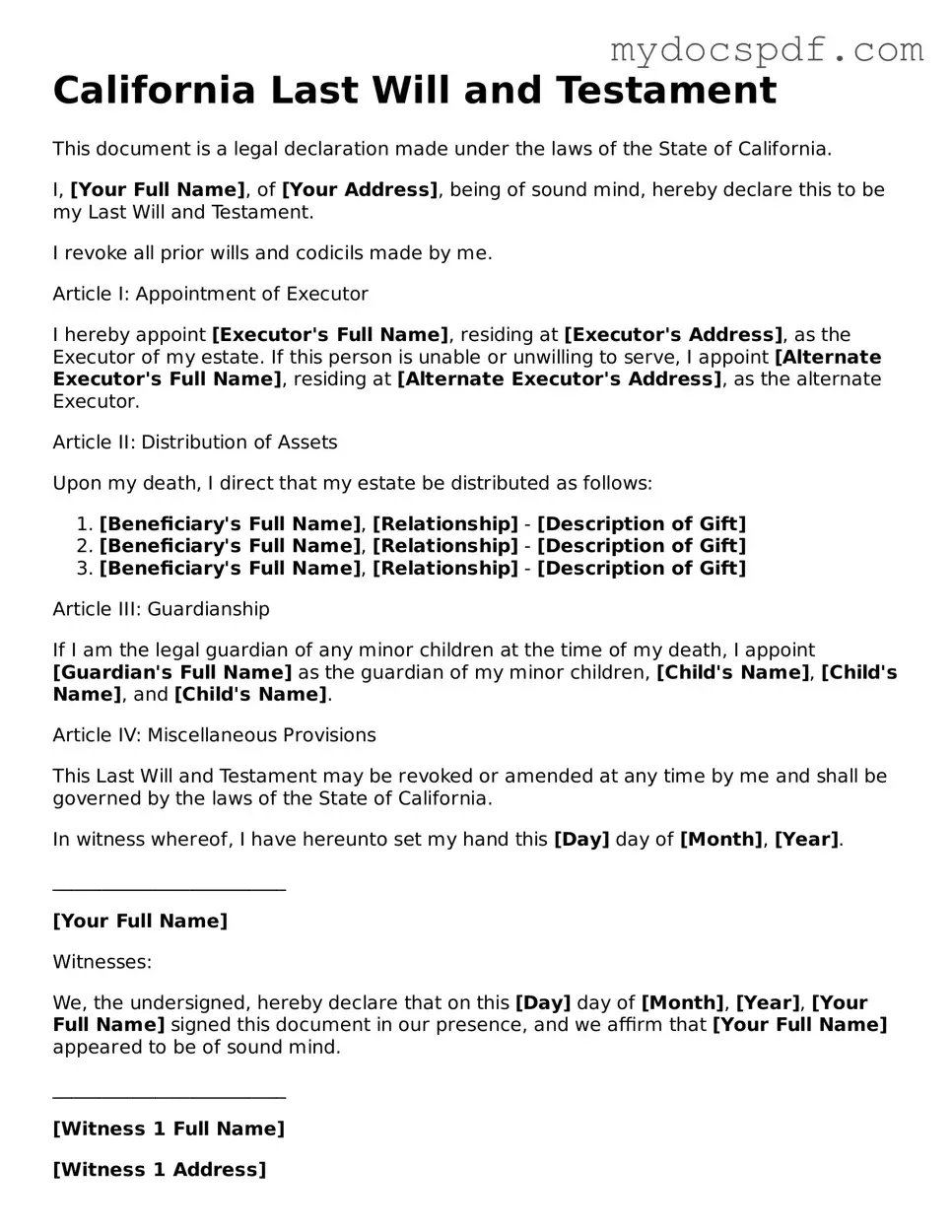California Last Will and Testament
This document is a legal declaration made under the laws of the State of California.
I, [Your Full Name], of [Your Address], being of sound mind, hereby declare this to be my Last Will and Testament.
I revoke all prior wills and codicils made by me.
Article I: Appointment of Executor
I hereby appoint [Executor's Full Name], residing at [Executor's Address], as the Executor of my estate. If this person is unable or unwilling to serve, I appoint [Alternate Executor's Full Name], residing at [Alternate Executor's Address], as the alternate Executor.
Article II: Distribution of Assets
Upon my death, I direct that my estate be distributed as follows:
- [Beneficiary's Full Name], [Relationship] - [Description of Gift]
- [Beneficiary's Full Name], [Relationship] - [Description of Gift]
- [Beneficiary's Full Name], [Relationship] - [Description of Gift]
Article III: Guardianship
If I am the legal guardian of any minor children at the time of my death, I appoint [Guardian's Full Name] as the guardian of my minor children, [Child's Name], [Child's Name], and [Child's Name].
Article IV: Miscellaneous Provisions
This Last Will and Testament may be revoked or amended at any time by me and shall be governed by the laws of the State of California.
In witness whereof, I have hereunto set my hand this [Day] day of [Month], [Year].
_________________________
[Your Full Name]
Witnesses:
We, the undersigned, hereby declare that on this [Day] day of [Month], [Year], [Your Full Name] signed this document in our presence, and we affirm that [Your Full Name] appeared to be of sound mind.
_________________________
[Witness 1 Full Name]
[Witness 1 Address]
_________________________
[Witness 2 Full Name]
[Witness 2 Address]
